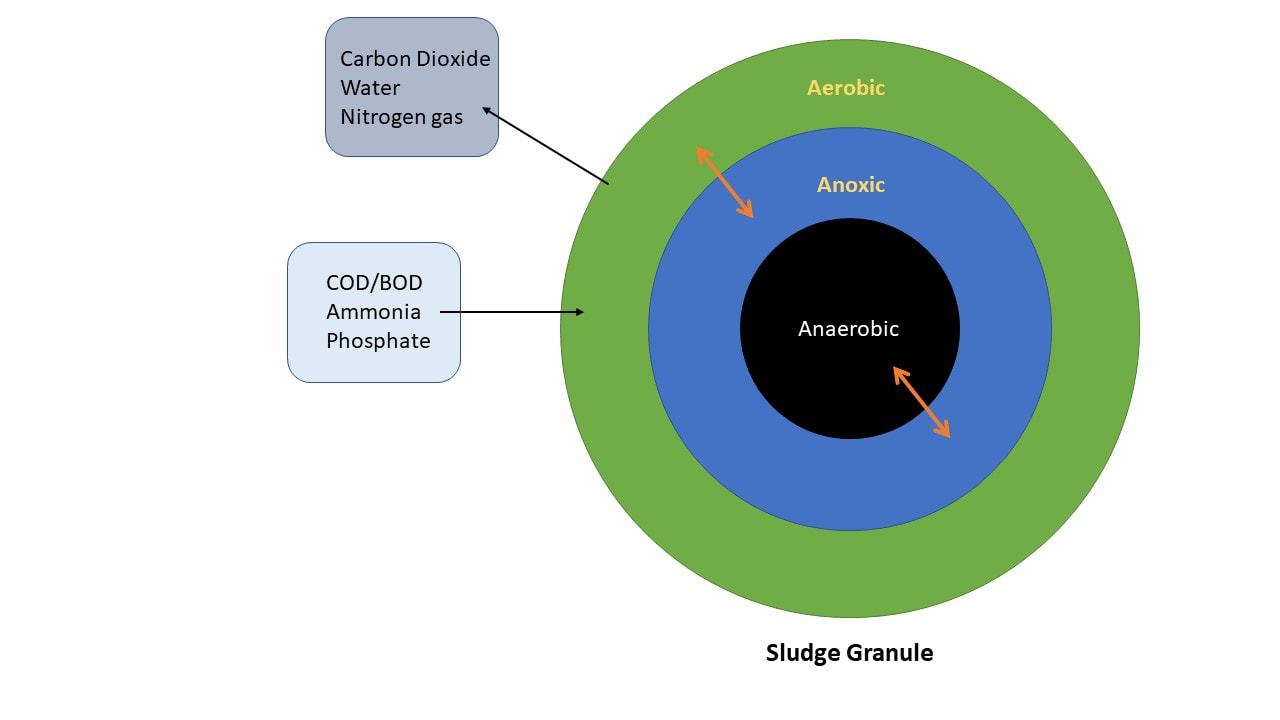It is all about the biological solids - floc or biofilm. The graphic below represents MLSS from an aerobic granular sludge facility which is a most extreme case of aerobic/anoxic/anaerobic zones in a biofilm. However, depending upon your solids concentration, floc size, and biological polymer matrix - you can have similar environments in an extended aeration activated sludge or MBBR system. So while the water column may have a DO > 3.0, oxygen does not diffuse throughout the floc which enables anaerobic cultures to thrive inside. We have also noted that increased particulates in older sludges can increase the anaerobic effect - another reason to maintain a proper F/M or sludge age by wasting.
|
With Aster Bio's increased work with molecular biomass testing (Environmental Genomics), we have found obligate anaerobic cultures in systems with DO meters reading above 3.0 mg/L in the aeration basin. How can this happen?
It is all about the biological solids - floc or biofilm. The graphic below represents MLSS from an aerobic granular sludge facility which is a most extreme case of aerobic/anoxic/anaerobic zones in a biofilm. However, depending upon your solids concentration, floc size, and biological polymer matrix - you can have similar environments in an extended aeration activated sludge or MBBR system. So while the water column may have a DO > 3.0, oxygen does not diffuse throughout the floc which enables anaerobic cultures to thrive inside. We have also noted that increased particulates in older sludges can increase the anaerobic effect - another reason to maintain a proper F/M or sludge age by wasting. 6/14/2018 07:52:58 pm
I am pretty sure that those people who belong to medical field has something to say about this article. In my case, I had a hard time understanding this post because the words that were used were not familiar to me. It was pretty hard since I didn't study this matter. I tried to understand as much as I can, but it seems like everything is not happening according to how I want it. I'm sure that this one was pretty helpful to others though. Comments are closed.
|
AuthorErik Rumbaugh has been involved in biological waste treatment for over 20 years. He has worked with industrial and municipal wastewater facilities to ensure optimal performance of their treatment systems. He is a founder of Aster Bio (www.asterbio.com) specializing in biological waste treatment. Click to set custom HTML
Archives
April 2024
|


 RSS Feed
RSS Feed